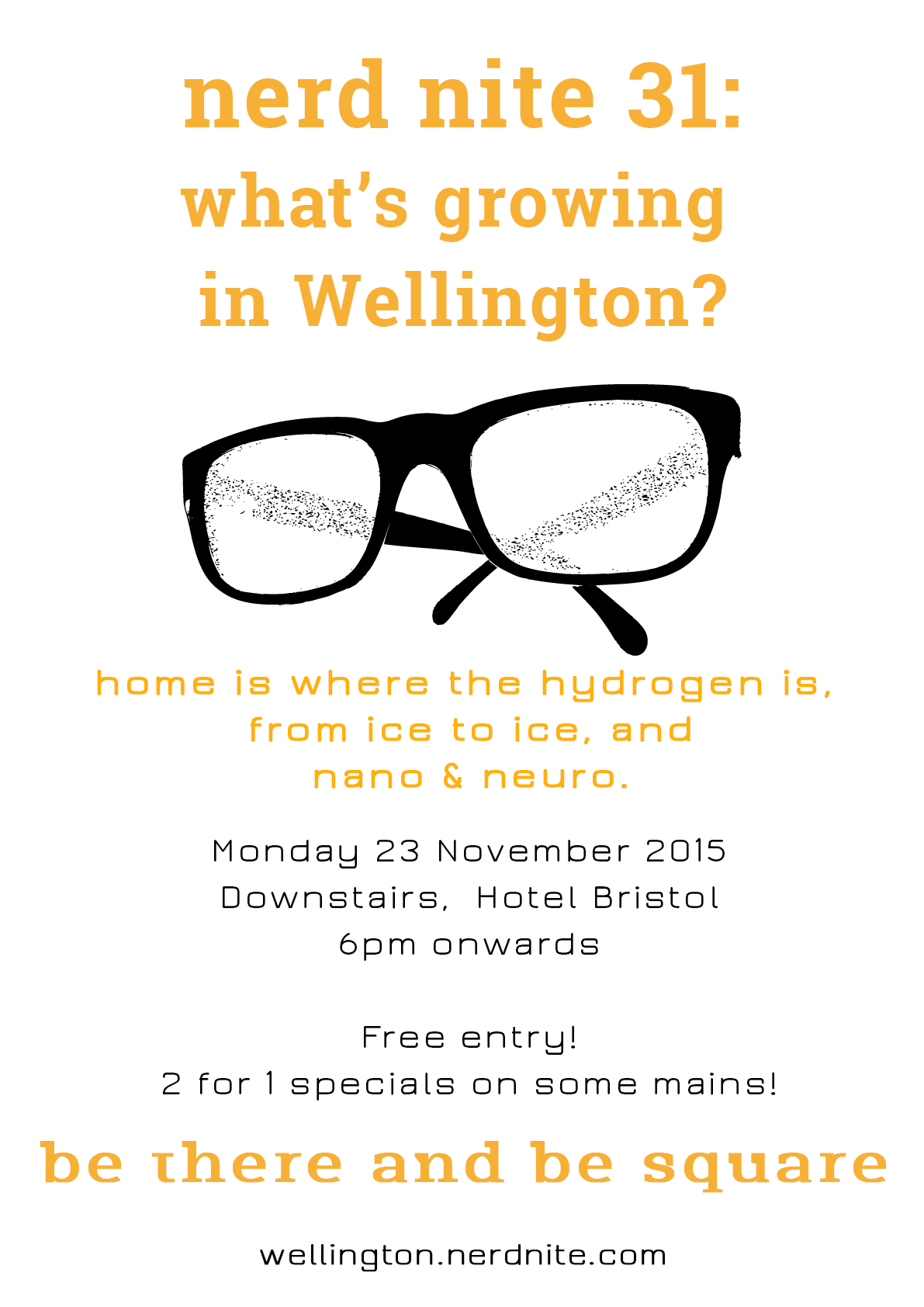Posts Tagged ‘scientists’
nerd nite 31: what’s growing in Wellington?
As usual, the awesome will be taking place at:
- Hotel Bristol (Cuba Street)
- 6pm (speakers to start at 6:30pm)
- Monday 23 November 2015.
As always, seating may run out, so don’t rock up at 6:30pm expecting to get a decent seat – or one at all.
What’s growing in Wellington?
Wellington Emerging Career researchers, @wtn_emcr
According to 2013 census data, Wellington has the highest percentage of people with university degrees of any region of New Zealand.
At this awesome edition of Nerd Nite Wellington, we’ll be featuring 3 emerging scientists from GNS, NIWA and Victoria University geeking out about their fields of expertise. Covering ocean physics, high temperature superconductors and understanding geothermal systems,Wellington’s wonderful young researchers will share their passion for their subjects and perhaps show you their science from a brand-new perspective.
Wellington is home to a plethora of research institutions including GNS Science, the Malaghan Institute for cancer research, NIWA, ESR and the MacDiarmid Institute. To name but a few. So one could reasonably expect that interesting scientific research happens here. Some of the city’s most interesting research, however, is being done by early career researchers (ECRs).
And this looks set to continue with support for ECRs central to the new Science for Technological Innovation national science challenge, presented as a cost-effective way of growing NZ’s creative capital. WECR (Wellington Emerging Career Researchers) is a small group representing the hundreds of scientists in Wellington within 10 years of completing their doctoral work.
—
LINEUP (note: speakers won’t necessarily appear in this order)
—
Home is where the hydrogen is
Lucy Stewart, GNS
Lucy will talk about correlating the presence of methanogenic microbes and hydrogen at hydrothermal vents, and how vents are useful as analogue study sites for astrobiology. She’s going to get into what hydrothermal vents are and where they’re found; how and why they support life; why methanogens are a particularly interesting kind of microbe at vent sites; and what her PhD research tells us about methanogens at hydrothermal vents, and how we can apply this knowledge to astrobiology and looking for life on other worlds.
Lucy Stewart completed her BSc(Hons) in microbiology at the University of Canterbury and her PhD in microbiology at the University of Massachusetts, Amherst, partially supported by a NASA Earth and Space Science Fellowship. She has returned to New Zealand to study the microbiology of Kermadec Arc volcanoes at GNS Science.
–
From ice to ice: ocean interactions with Antarctic ice
Natalie Robinson, NIWA
In an apparent paradox, sea ice around Antarctica has been expanding, despite forming in an ocean that is becoming warmer. Part of the answer to this puzzle lies in the effect that the warming ocean is also having on Antarctic ice shelves – the floating extension of the land-based ice sheet. Melting of ice shelves by the ocean creates water that becomes supercooled as it rises towards the surface. This very cold water contributes to thickening of sea ice, especially near to the coast. In this talk I will highlight some of the weird phenomena we have observed, and describe how they relate to the bigger climate picture in a warming world.
Natalie completed her MSc (VUW) and PhD (Otago) degrees in Antarctic Oceanography, and has recently been made part-time permanent at NIWA with a similar focus. She’s also diverged into other multi-phase systems, looking at explosive depositional processes and turbulence from fish in cages. With 3 young children, leisure time no longer exists, but in a previous life she enjoyed playing piano, long-distance running, salsa dancing and circus training.
–
Nano & neuro
Leo Browning, VUW
—–
As always, NNW is free and open to everyone*. Bring your friends and family – someone to share a meal with, definitely, as there are some great 2 for 1 specials on the menu.
* Who behaves themselves, of course. Naughtiness will be stamped on. Hard.
